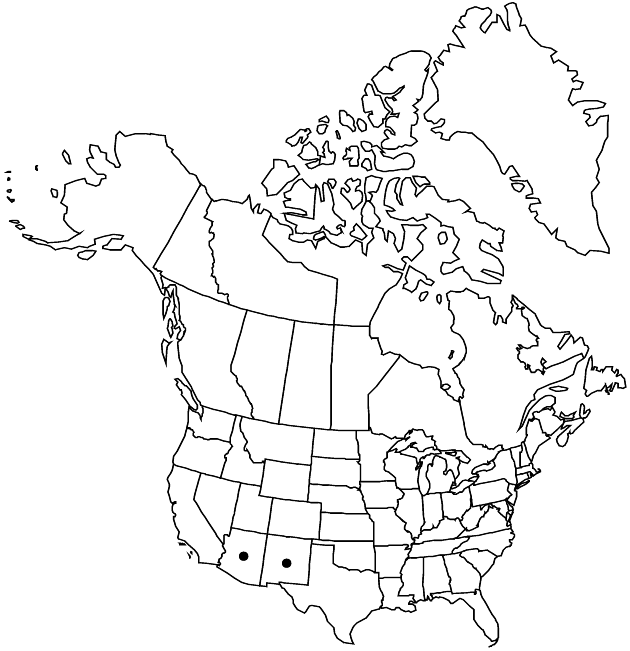Erigeron sivinskii
Phytologia 71: 416. 1992.
Perennials, 5–8 cm; taprooted, caudex branches relatively short, thick, retaining old leaf bases. Stems erect (greenish), closely strigose (hairs white, equal), eglandular. Leaves basal (persistent, persistent portions relatively short and broad) and cauline (petioles erect, greenish, bases broadened or not, not thickened and whitish-indurate); blades linear, 12–30 × 0.5–0.8 mm, cauline unreduced for ± 1/2 stems, margins entire, eciliate, faces sparsely strigose, eglandular. Heads 1. Involucres 5–6 × (8–)10–14 mm. Phyllaries in 2–3 series (greenish, relatively thinly herbaceous), sparsely hirsuto-pilose along midribs, minutely glandular. Ray florets 21–33; corollas white, with abaxial lilac midstripe, 7–9 mm, laminae coiling. Disc corollas 3–3.8 mm. Cypselae (narrowly oblong) 2.8–3.1 mm, 2(–3)–nerved, margins sparsely ciliate, faces glabrous; pappi: outer of setae, inner of 21–27 bristles.
Phenology: Flowering May–Jun.
Habitat: Red clay slopes of Summerville Formation and eroded, shale slopes of the Chinle Formation, desert scrub and pinyon-juniper woodland
Elevation: 1700–2300 m
Discussion
Of conservation concern.
Selected References
None.
